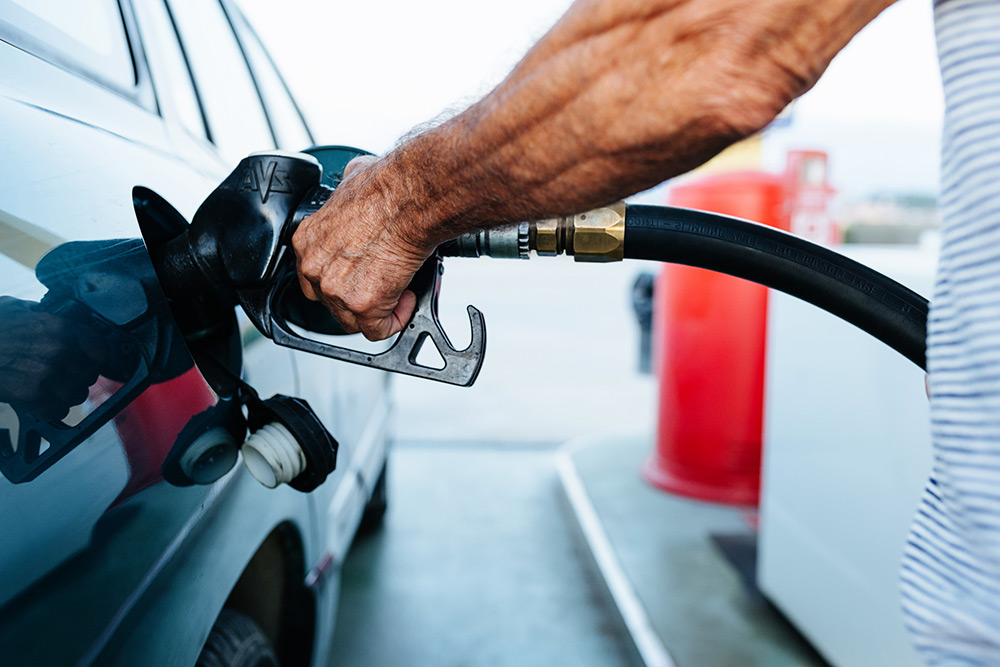Real-world fuel testing finds more vehicles not meeting lab results
AAA finds mixed results in the latest round of real-world fuel consumption and emissions testing.

A popular diesel-powered 4x4 dual-cab ute that used 6% more fuel than its mandated laboratory fuel consumption figure and a petrol-hybrid SUV that used 7% more were among the results from the Australian Automobile Association’s (AAA) latest fuel consumption and emissions testing.
The AAA said the data from its fourth round of testing confirmed that consumers should not assume laboratory tests on a car’s fuel consumption and environmental impacts provided an accurate indicator of vehicle performance in the real world.
The latest tests did not find the large variations revealed in previous rounds, with the MY24 Isuzu Ute D-Max 4x4 (+6%) and the MY24 Toyota Corolla Cross Hybrid (+7%) showing the greatest difference between their lab result and their real-world results.
In the case of the Corolla Cross, that meant a real-world result of 4.5L/100km versus its mandated lab result of 4.2L/100km, while the D-Max’s real-world result was 8.5L/100km versus its lab result of 8.0L/100km.
Both vehicles also returned higher CO2 emissions than their mandated lab results.
One vehicle, the MY23 Audi Q5 exactly matched its mandated laboratory fuel consumption, while several others including the MY23 Kia Carnival (-2%), MY23 Kia Sorento (-2%), MY23 Audi Q3 (-3%), MY23 Hyundai Tucson (-3%) and MY24 Subaru Forester (-3%) delivered better real-world consumption than their lab result.
Find out more about the Real-World Testing Program
Despite this, the AAA said the overall results of its first full year of the Real-World Testing Program showed that some cars tested consumed as much as 31% more fuel in real-world conditions than their mandatory laboratory tests.
In addition, 21 of the 58 cars tested produced on-road emissions that exceeded current or upcoming Australian regulatory lab limits for toxic tailpipe emissions.
“We can now say with confidence that while some vehicles produce fuel consumption and emissions in line with lab tests reported by carmakers, many do not,” said AAA Managing Director Michael Bradley.
“That can have real impact on consumers and fleet buyers. If people rely on the lab tests, they could end up with a car that costs more to run or is dirtier than they expected.
“The results raise a question for regulators about whether car dealerships should be required to reveal real-world testing results to consumers at point of sale.’’
The $14 million, four-year Real-World Testing Program is run by the AAA and funded by the Commonwealth.

It was created in response to the 2015 Volkswagen emissions scandal, which showed that emissions regulations around the world incentivised carmakers to optimise their vehicles’ fuel consumption and emissions performance for the laboratory tests being used for regulatory compliance.
Mr Bradley said the world-first program had now tested enough cars, SUVs, utes and people movers to enable consumers to examine the results for multiple vehicle models within the same class, which they can use as part of their new car buying research.
“If you are buying a small car, for example, we’ve now tested eight small-car models from different manufacturers, giving consumers a chance to understand real-world fuel consumption and emissions before they buy,” he said.
“We also now have multiple vehicle results across various vehicle classes, including small, medium and large SUVs, as well as utes.”
The latest tranche of test results showed 15 cars across a range of classes consumed as much as 7% more fuel than reported in lab testing, while five consumed less fuel on the road than in the lab.
It also found that although four diesel vehicles recorded real-world fuel consumption rates close to lab test results, all four produced noxious emissions above the mandated lab-test limits.\
The four-year RWT program will test up to 200 cars, SUVs, and utes, including electric vehicles.
Under the Real-World Testing Program, cars are tested on roads in and around the Victorian city of Geelong under strict test protocols to ensure fuel consumption and emissions results are repeatable and minimise the influence of human factors such as driving style and changing traffic flows.
For research purposes, the AAA undertook 23 tests on the program’s reference vehicle (a Toyota RAV4), with fuel consumption across these tests having less than 2.5% variability.
The AAA is the nation’s peak motoring body, representing Australia’s state-based motoring clubs and their 9.3 million members.
Related topics
Things to note
The information in this article has been prepared for general information purposes only and is not intended as legal advice or specific advice to any particular person. Any advice contained in the document is general advice, not intended as legal advice or professional advice and does not take into account any person’s particular circumstances. Before acting on anything based on this advice you should consider its appropriateness to you, having regard to your objectives and needs.
Insurance Products (excluding Travel Insurance) are issued by RACQ Insurance Limited ABN 50 009 704 152 (RACQI) and arranged by its agent, RACQ Distribution Services Pty Ltd (RDS) ABN 35 116 361 650, AFSL 567130 and RDS' authorised representatives (including RACQ Operations Pty Ltd ABN 80 009 663 414, AR No. 234978 (RACQO). Conditions, limits and exclusions apply. RDS and RACQO are in the RACQ group of companies. One of the companies in the RACQ group of companies has a minority shareholding in RACQI.
RDS and RACQO have not taken your personal objectives, circumstances or needs into account when preparing advice regarding insurance products and you will need to consider whether the advice is appropriate for you. Read the Product Disclosure Statement (PDS) and any applicable Supplementary PDS before making a purchase decision on this product. You can also access our Target Market Determinations on this website. RDS receives a commission from RACQI for the policies it arranges. RACQO receives fees paid for services it provides to RDS. Further details about remuneration are available on request prior to purchasing.
Banking and loan products issued by Members Banking Group Limited ABN 83 087 651 054 AFSL/Australian credit licence 241195 trading as RACQ Bank. Terms, conditions, fees, charges and lending policies apply. This is general advice only and may not be right for you. This information does not take your personal objectives, circumstances or needs into account. Read the disclosure documents for your selected product or service, including the Financial Services Guide and the Terms and Conditions, and consider if appropriate for you before deciding.
Except for RACQ Bank, any RACQ entity referred to on this page is not an authorised deposit-taking institution for the purposes of the Banking Act 1959 (Cth). That entity’s obligations do not represent deposits or other liabilities of RACQ Bank. RACQ Bank does not guarantee or otherwise provide assurance in respect of the obligations of that entity, unless noted otherwise.
RACQ Bank subscribes to the Customer Owned Banking Code of Practice which establishes higher standards than the law requires. The Code reflects modern consumer expectations and developments in approaches to issues such as consumer vulnerability, guarantors, and supporting customers through financial hardship. Please read our Customer Owned Banking Code of Practice page for more information.
RACQ Operations Pty Ltd (ABN 80 009 663 414 AR 000234978) and Members Travel Group Pty Ltd (ABN 45 144 538 803 AR 000432492) are acting as an Authorised Representative of the issuer of the insurance, Tokio Marine & Nichido Fire Insurance Co., Ltd. (ABN 80 000 438 291 AFSL 246 548). Any advice set out above is general in nature only, and does not take into account your objectives, financial situation or needs. Before purchasing any travel products, please consider the RACQ Travel Insurance Product Disclosure Statement (PDS) and the Target Market Determinations (TMDs) that apply to these products. Whilst the PDS outlines the Terms and Conditions of these products, the TMDs outline the intended class of customers that comprise the target market for these travel products. This will allow you to consider which products best suit your objectives, financial situation and needs and consider the products appropriateness to your personal circumstances. TMDs also outline matters involving the distribution and the review of these products. The PDS, Supplementary PDS and TMDs for each travel product can be found here.
